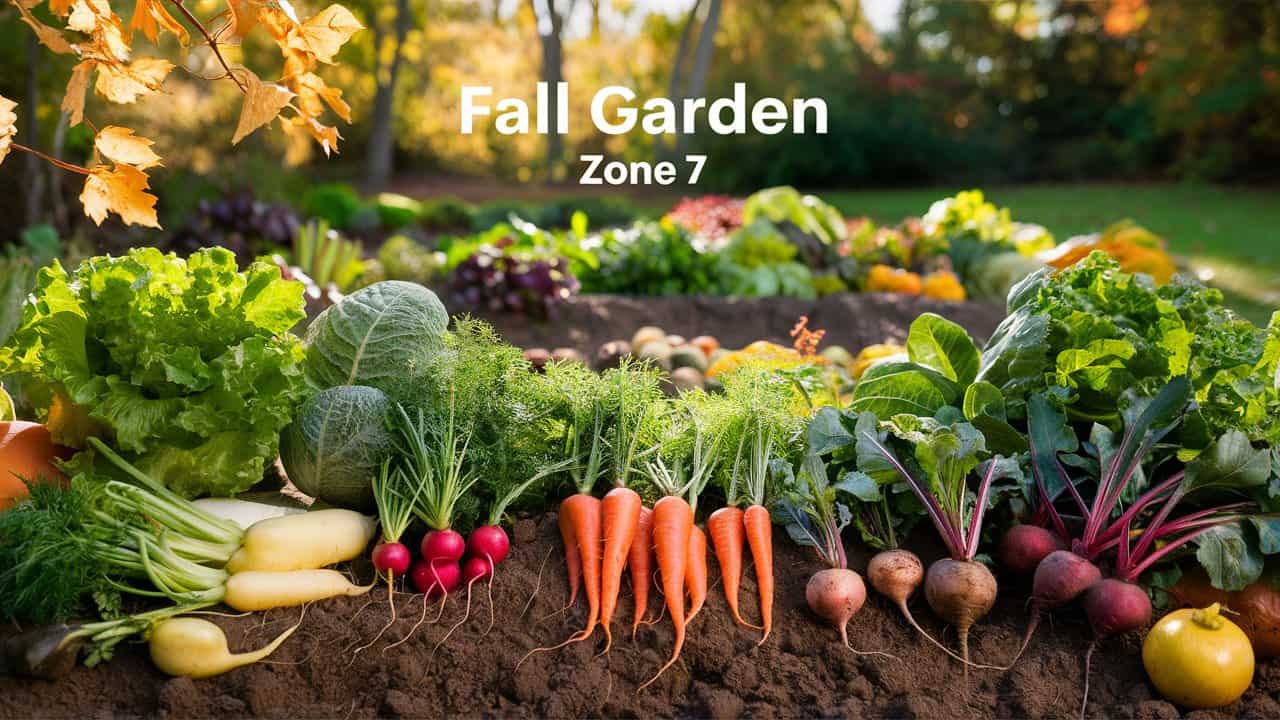As autumn deepens, gardeners in Zone 7 have the unique opportunity to prepare their beds for both fall harvests and spring crops. October is a transitional month, marked by cooler temperatures and shorter days, making it the perfect time to sow some key crops that thrive in this climate.
Garlic
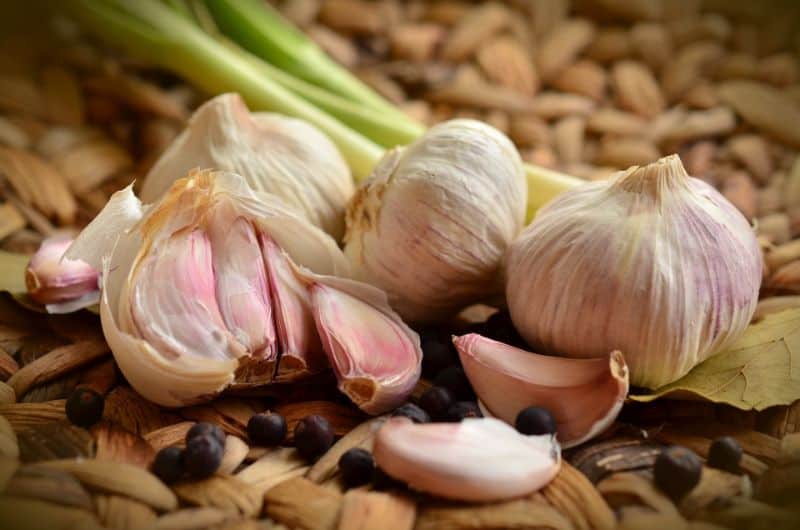
Garlic is a staple in many kitchens and a rewarding plant for gardeners due to its low maintenance and high yield. In Zone 7, October is the ideal time to plant garlic cloves. The cooler soil temperatures encourage the roots to establish before the winter cold sets in.
Preparation for Planting
Begin by selecting a sunny spot in your garden where the soil drains well. Garlic prefers a rich, loose soil with organic matter. Amend the soil with compost to enhance its fertility, ensuring your bulbs can thrive. When it comes to selecting your garlic, choose hard-neck varieties for a robust flavor in milder winters, or soft-neck varieties for easier storage. Avoid supermarket garlic as it may not be well-suited for your local conditions; instead, pick bulbs from local nurseries or specialty garlic growers.
Planting Tips
Separate the cloves just before planting, leaving the papery skin intact. Plant them about two inches deep, with the pointed ends facing upwards, and spaced six inches apart. Once planted, apply a layer of mulch—straw or shredded leaves—to protect the soil and retain moisture throughout the winter months. This insulation will also help in maintaining optimal soil temperatures for root development.
Care and Harvesting
During the fall, there’s not much maintenance, aside from keeping an eye on moisture levels and removing any weeds that may surface. When spring arrives, the garlic will begin to grow, and once the leaves start to brown—usually around mid-summer—it’s time to harvest your garlic. Cure them in a shady, well-ventilated area before storing.
Shallots

Shallots are often overlooked in favor of their more popular onion relatives, but they offer a sweetness and complexity that makes them an exceptional choice for autumn planting in Zone 7. These versatile alliums can be grown in clusters or as individual bulbs, making them well-suited for small garden spaces.
Choosing and Preparing the Site
In October, it’s best to source disease-free shallot bulbs from local seed companies or garden centers. Plant in an area where shallots can receive full sunlight for a minimum of six hours a day. The soil should be well-draining and nutrient-rich—again, amending with compost is beneficial.
Planting Instructions
Like garlic, shallots prefer to be planted in the fall. Place the bulbs pointy-side up about two inches deep and spaced six to eight inches apart. Cover them lightly with soil and mulch with straw to maintain soil warmth and moisture levels throughout the winter.
Growing Conditions and Harvesting
Once planted, shallots will go dormant during the winter but will reemerge in spring. They require minimal watering, but provide periodic light irrigation during dry spells in spring. Harvesting shallots usually occurs in late summer when the tops begin to fall over and turn yellow. Cure them in a similar manner to garlic, keeping them in a warm, dry place.
Radishes
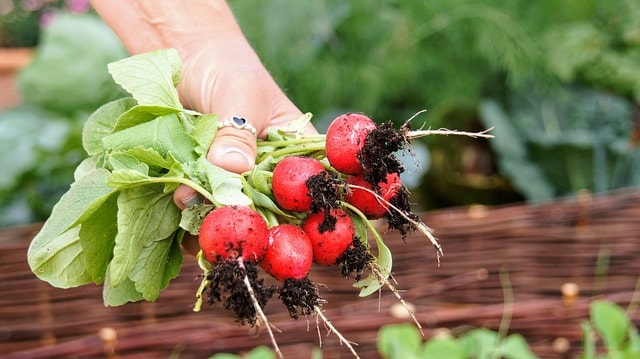
Radishes are one of the fastest-growing crops and make an excellent addition to your October gardening plan in Zone 7. They can be sown directly into the ground, making them a practical choice for the fall garden. With a quick turnaround time of just a few weeks from sowing to harvest, they provide nearly instant gratification for the gardener.
Varieties and Sowing
There are numerous radish varieties available, ranging from small, peppery types to larger, milder ones. When planting in October, consider choosing cold-hardy varieties, such as ‘Daikon’ or ‘French Breakfast,’ which can tolerate light frosts.
Planting Techniques
Sow radish seeds directly into prepared soil around ½ inch deep and spaced 1-2 inches apart in rows. An essential part of growing radishes is ensuring consistent moisture—without it, their growth can slow and lead to a woody texture. Given the rapid growth rate of radishes, they should be can be sown in succession every two weeks for a continuous harvest through the fall.
Harvesting and Enjoying
Radishes are best harvested when they are about one inch in diameter, as overgrown radishes can become tough and pithy. Pull them gently from the soil and rinse off the dirt before enjoying in salads or as a crunchy snack. Their flavor is wonderfully enhanced with a touch of salt or used as a garnish for various dishes.
Mache
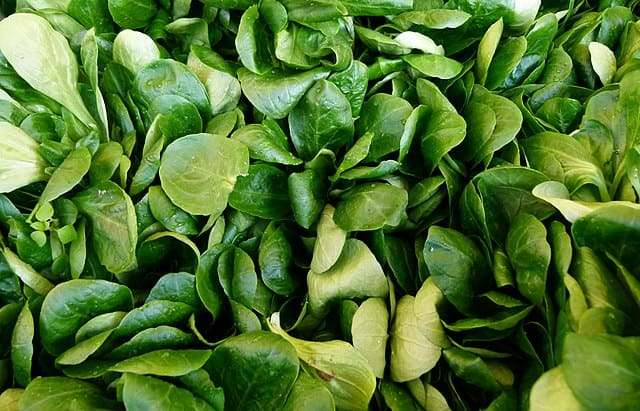
Mache, also known as corn salad or lamb’s lettuce, is a delightful green that is perfect for planting in October. This hardy salad green boasts a mild, nutty flavor and tender leaves, making it a favorite among gourmet chefs and home gardeners alike.
Selecting Varieties
When cultivating mache, consider choosing varieties such as ‘Gentil de Doubs’ or ‘Vit’ that are known for their cold tolerance and ability to thrive in less-than-ideal weather. These varieties are capable of withstanding light frost, which makes them particularly suited for an October garden in Zone 7.
Sowing Tips
Mache can be sown directly into your garden beds from mid-to-late October. Since these plants prefer cooler conditions, the seeds should be sown about ½ inch deep and spaced approximately two inches apart. If you’re planting in a rich, well-drained bed, seedlings will emerge in about two weeks, and you’ll want to keep the soil consistently moist to encourage robust growth.
Care and Harvesting
One of the greatest advantages of mache is its minimal care requirements. It thrives without much additional fertilization, but a light layer of mulch can help retain moisture and suppress weeds. When harvesting, you can either cut the leaves from the base or pull the whole plant once it reaches about 6 inches tall. Because mache can continue growing in cooler weather, you can enjoy fresh salads well into the winter months.
Claytonia
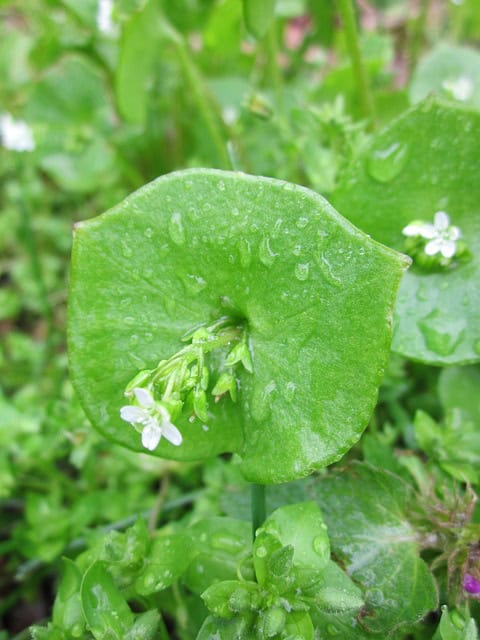
Claytonia, often referred to as miner’s lettuce or Indian lettuce, is another excellent green to consider for October planting in Zone 7. This native North American plant is cherished for its tender leaves and is a nutritious addition to salads and stir-fries.
Growing Conditions
Claytonia prefers partial shade but can also tolerate full sun, making it a versatile crop that can fit into various garden layouts. It’s best to plant Claytonia in a nutrient-rich soil that maintains moisture without becoming waterlogged. Incorporating compost before planting will give your plants the nutrients they need to flourish.
Planting Methods
Seeds should be sown directly into the ground about ¼ inch deep and spaced 1-2 inches apart in early to mid-October. Given its quick germination timeline, you can expect seedlings to sprout within a week or two, especially in the cooler weather that favors its growth.
Maintenance and Harvesting
Claytonia is incredibly forgiving and requires minimal maintenance. Regular watering is essential, particularly if the weather becomes dry, but be cautious not to overwater. The leaves can be harvested once they are about 3-4 inches long, typically by pinching off the outer leaves, allowing the center to continue producing new growth. This method ensures a continuous supply of fresh greens through late fall and into winter.
Kale
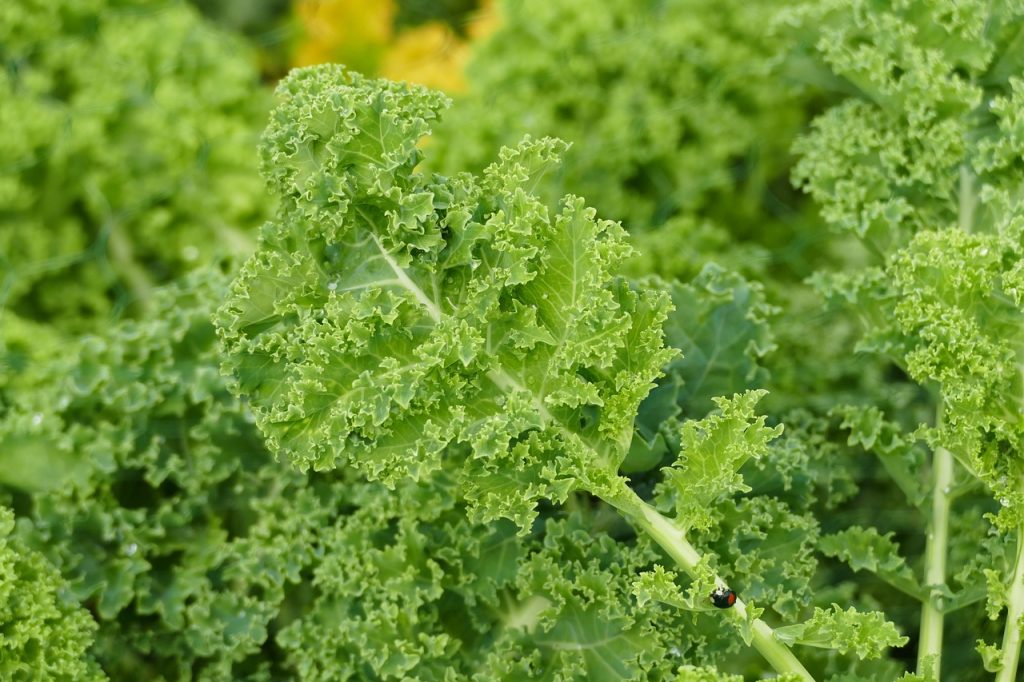
Kale stands out as one of the most versatile and nutritious leafy greens you can grow, especially in cooler climates like Zone 7. Thanks to its frost tolerance, kale actually becomes sweeter after exposure to cold temperatures, making it a fantastic choice for October gardening.
Variety Selection
When selecting varieties, you might try ‘Winterbor’ or ‘Lacinato’ (Dinosaur kale), both of which are renowned for their adaptability and flavor. These varieties are robust and can withstand the cooler temperatures characteristic of late fall.
Planting Instructions
If you haven’t yet sown kale seeds, October is an excellent time to directly sow them into well-prepared soil. Plant seeds about ½ inch deep and space them 12-18 inches apart to allow for their wide growth habit. Kale can also be grown from transplants, and if you choose this method, start your seedlings indoors a few weeks before transplanting them outside.
Ongoing Care and Harvest
Kale plants appreciate regular moisture during their growth stages, and watering should be sustained, particularly if the autumn weather turns dry. Mulching around the base of the plants can help retain soil moisture and keep weeds at bay. As the plants mature, you can begin to harvest individual leaves. It’s advisable to pick from the outer leaves first, allowing the inner leaves to continue growing and thrive even during the harshest conditions. The frost-enhanced flavor of kale is perfect for fall and winter recipes, adding depth to soups, stews, and salads.
Spinach

Spinach is a classic cool-season crop that thrives in the fall garden. Known for its nutrient density and versatility in the kitchen, this leafy green is an excellent choice for October planting in Zone 7.
Ideal Conditions for Growth
Spinach prefers well-drained, rich soil amended with organic matter. It grows best in full sun but can tolerate light shade, especially as temperatures drop. To improve germination, soil temperatures should ideally be between 50°F to 75°F. This makes October a sweet spot for sowing either directly into the garden or starting seeds indoors for a later transplant.
Planting Techniques
When planting spinach in October, sow seeds about ½ to 1 inch deep and space them approximately 2 inches apart in rows. This spacing will allow for ample room for the plants to grow, enabling good air circulation and reducing the risk of fungal diseases. If sowing directly, consider making successive plantings every two to three weeks to stagger your harvest.
Care and Harvesting
Spinach requires regular moisture, particularly as seedlings establish themselves, but it is critical to ensure good drainage to prevent waterlogging, which can lead to root rot. Harvesting can begin once the leaves are around 3 inches long, and picking outer leaves first will promote continued growth in the center. Spinach is particularly enjoyable fresh in salads or cooked in a myriad of dishes, retaining its flavor even with light frosts.
Swiss Chard
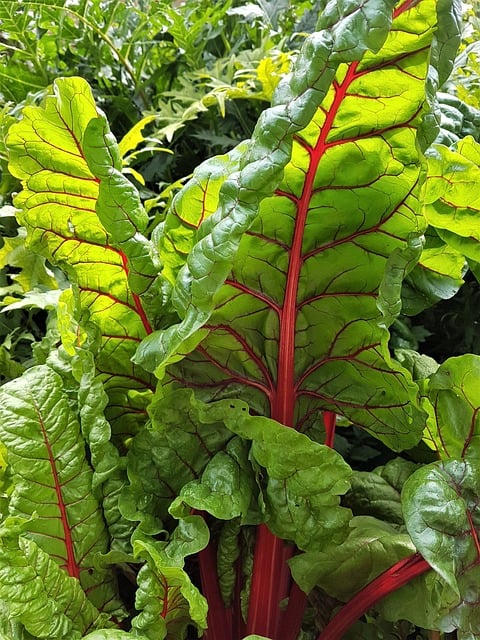
Swiss chard is another fabulous addition to an October garden in Zone 7. With its vibrant, colorful stems and broad leaves, Swiss chard not only offers aesthetic appeal but also provides a wealth of nutritional benefits, including vitamins A, C, K, and magnesium.
Choosing the Right Varieties
Several varieties of Swiss chard exist, including ‘Bright Lights,’ which showcases a spectrum of colors, and ‘Fordhook Giant,’ renowned for its larger, tender leaves. When selecting your seeds, consider how you plan to use the chard, as each variety offers unique flavors and textures.
Planting Time and Method
Sow Swiss chard seeds about ½ inch deep and spaced 6-12 inches apart, preferably in groups of 3-4 seeds to ensure robust growth. As with spinach, October is an ideal month for direct sowing, allowing for established plants to grow vigorously through the fall and into early winter.
Maintenance Needs
Swiss chard is relatively low-maintenance, requiring average watering—around an inch per week depending on rainfall. Mulching can help retain moisture and reduce weed competition. When it comes time to harvest, you can cut individual leaves or remove the entire plant for a larger collection, which encourages further growth of the remaining stems.
Arugula

Arugula, or rocket, is a fast-growing salad green with a bold and peppery flavor that can bring a delightful kick to your fall dishes. Ideal for Zone 7, arugula is excellent for both novice and experienced gardeners looking to enjoy fresh greens quickly.
Growing Preferences
Arugula flourishes in well-drained soil enriched with compost, and it appreciates full sun, although partial shade can extend growing time into the warmer parts of the fall. Being a cold-hardy green, it has the ability to withstand light frosts, which can even enhance its flavor.
Planting Techniques
When sowing arugula seeds in October, plant them about ¼ inch deep in rows spaced 12 inches apart. Owing to its rapid growth, you can expect to see seedlings appear in as quickly as 5-10 days. For continuous harvest, consider planting a new batch every two weeks.
Care and Harvesting Advice
Arugula prefers moist soil, so light, consistent watering is essential, particularly as seeds germinate. Harvesting can begin as soon as leaves are large enough to eat, often around 3-4 inches long. Regularly trimming the outer leaves will not only provide fresh greens for salads but also encourage the plant to continue growing throughout the fall.
Flowers To Plant in October in Zone 7
Pansies

Pansies are a beloved choice for fall planting, offering an array of colors and patterns that can breathe life into any autumn garden. These cool-season annuals can withstand chilly nights, making them a perfect addition to your landscape as the temperatures drop.
Choosing the Right Varieties
When selecting pansies for planting in October, consider varieties such as ‘Matrix’ or ‘Colossus’ that are bred for cold tolerance and vibrant colors. These pansies will not only deliver eye-catching blooms but are also resilient against the early frosts.
Planting Instructions
Pansies thrive when planted in well-draining soil rich in organic matter. Aim to plant pansies in either early to mid-October, placing them 6 to 8 inches apart to ensure proper airflow. Dig a hole that accommodates the root ball while keeping the top of the root ball level with the soil surface.
Ongoing Care
Water your newly planted pansies regularly, allowing the top inch of soil to dry out between waterings. This practice promotes deep root growth and helps the plants establish in their new environment. To prolong the blooming period, deadhead spent flowers to encourage new growth, and don’t hesitate to mulch around your pansies to regulate temperature and retain moisture during cooler nights.
Tulips

Tulips are an iconic spring flower that gardeners can plant in October, setting the stage for a stunning display of color once the thaw arrives. These perennial favorites are celebrated for their elegant shapes and vibrant colors, which can enhance any landscape or garden bed.
Selecting Tulip Varieties
Choose from a range of tulip varieties based on your desired bloom time, color, and height. Early bloomers like ‘Tulip Darwin’ or mid-season options like ‘Triumph’ can create a stunning succession of blooms from late March to early May. Selecting a mix of varieties can extend your display and add depth to your garden.
Planting Techniques
Tulips should be planted rather deep—about 6 to 8 inches—depending on the bulb size, with the pointed end facing upwards. A good rule of thumb is to plant bulbs at a depth three times their height. Space the bulbs 4 to 6 inches apart to allow for healthy growth and flourishing blooms come springtime.
Care Tips
Once planted, tulip bulbs require little maintenance until they sprout in the spring. Mulching your tulip beds with a layer of straw or shredded leaves can help insulate the ground and maintain moisture levels. After blooming, allow the foliage to die back naturally; this process enables the bulbs to store energy for the next growing season.
Crocuses

Crocuses are among the first flowers to signal the arrival of spring, making them an exciting addition to any Zone 7 garden. These petite blooms often emerge while snow is still on the ground, heralding the end of winter and the beginning of a fresh growing season.
Choosing Crocus Varieties
There are many crocus species to consider, including delicate purple ‘Crocus tommasinianus’ and vibrant yellow ‘Crocus chrysanthus’. For a truly captivating display, consider mixing different species to create a colorful carpet of blooms that will last from late winter into early spring.
Planting Instructions
Crocus bulbs should also be planted in October, about 3 to 4 inches deep and spaced 3 to 4 inches apart. They prefer well-draining soil and a sunny spot—or a location with light shade, particularly in the heat of the summer. Planting crocus in clusters can create a stunning visual impact when they bloom.
Maintenance and Care
Crocuses require minimal maintenance once planted; however, it’s essential to keep the soil moderately moist until they establish roots. After flowering, allow the green foliage to persist until it turns yellow and dies back naturally. This allows the bulbs to gather energy for the next year’s blooms.
Irises

Irises are an excellent addition to any garden, renowned for their striking blooms and unique shapes. They’re perennial favorites that can bring a burst of color to spring gardens, and October is the perfect time to plant rhizome varieties.
Choosing Your Varieties
When selecting irises, you may want to consider the classic bearded iris types such as ‘Beverly Sills’ known for its peach and coral hues or the deep purple ‘Deeply Rooted.’ Other popular options include Siberian and Dutch irises, which vary in height, color, and bloom time. Selecting varieties that complement your existing garden palette will create a cohesive visual experience throughout the spring.
Planting Techniques
Irises prefer well-drained soil and a sunny location, ideally with at least six hours of sunlight per day. In mid-October, plant rhizomes horizontally with the tops exposed to the air. Dig a hole deep enough to accommodate the roots while ensuring the rhizome sits slightly above soil level. Space the rhizomes 12 to 24 inches apart to allow for their wide growth habit.
Ongoing Care and Maintenance
After planting, water your irises thoroughly, but be careful not to overwater. Mulching can help control weeds and retain moisture, but keep mulch away from the rhizomes themselves. In the spring, cut back any dead foliage to encourage new growth and enjoy watching these beauties bloom, bringing stunning visual appeal to your landscape.
Hellebores
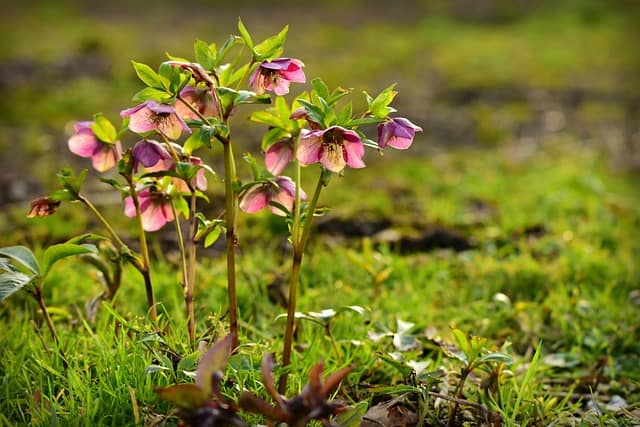
Hellebores are unique winter-flowering perennials that offer delicate, nodding blossoms in the late winter to early spring months, often emerging through the snow. They provide much-needed color and interest when many other plants are still dormant.
Choosing Hellebore Species
There are several species of hellebores, including the Lenten rose (Helleborus orientalis) and the Christmas rose (Helleborus niger). Lenten roses are particularly versatile and come in various colors, such as pink, white, and deep purple. When selecting your plants, consider the bloom color and foliage type to enhance the visual contrast in your garden.
Planting Instructions
October is an excellent time to plant hellebores, as they prefer well-drained, loamy soil rich in organic matter. When planting, dig a hole about twice the size of the root ball and ensure the top of the crown is level with the soil surface. Space hellebores 12 to 24 inches apart to allow for their expansive growth.
Care After Planting
These hardy perennials benefit from some shade, especially in the hot summer months, making them an ideal choice for woodland gardens. Regular watering is important as they establish, but they are relatively drought-tolerant once established. To encourage healthy blooming, apply a balanced fertilizer in early spring, and consider cutting back the foliage after blooming to promote fresh growth.
Shade Trees

In October, it’s also an opportune time to plant shade trees, which can significantly impact your garden’s ecosystem and aesthetic. A well-placed shade tree can provide relief from the summer sun, improve air quality, and enhance wildlife habitats.
Selecting the Right Tree
Choosing the right shade tree depends on the size of your space and your garden’s growing conditions. Popular trees for Zone 7 include the Red Maple (Acer rubrum), Eastern Redbud (Cercis canadensis), and Sweetgum (Liquidambar styraciflua). Each of these trees provides ample shade and beautiful seasonal changes, blanketing your yard in color during spring and fall.
Planting Tips
When planting shade trees in October, ensure the location receives sufficient sunlight and has well-draining soil. Dig a hole that is two to three times wider than the root ball but not deeper than the root ball’s height. Place the tree within the hole, spreading the roots outwards, and backfill with soil, making sure the root flare is level with the ground surface.
Maintenance and Care
Water your newly planted trees deeply and regularly, particularly during their first year to facilitate strong root establishment. Mulch around the base can also help retain soil moisture and suppress competing weeds. As your trees grow, proper pruning will promote healthy branching and reduce the risk of disease.
Cool-Season Annuals

While many annuals fade with the approach of cooler temperatures, planting cool-season annuals in October can keep your garden vibrant. These plants are hardy enough to withstand the chill and often thrive in the changing weather.
Best Varieties to Consider
Some excellent choices for cool-season annuals include pansies, violas, and ornamental kale. Pansies, known for their wide spectrum of colors, can bloom even after a frost, enhancing your garden’s appearance throughout the fall and early winter. Ornamental kale, on the other hand, adds unique texture and color, bringing life to otherwise drab winter landscapes.
Planting and Care
When planting these cool-season annuals, it’s essential to choose a location that receives full sun to partial shade. Prepare the soil by amending it with compost to ensure proper nutrient levels. Plant at the recommended spacing and water them well to establish roots before the cold sets in. Regular deadheading and removing any diseased leaves will encourage prolonged blooming and health.
Ornamental Shrubs

October is also an appropriate time to plant ornamental shrubs, which can provide structure, texture, and year-round interest to your landscape. These shrubs can create a beautiful backdrop for your annuals and can be enjoyed for their foliage, flowers, and even berries.
Suitable Choices for Zone 7
Consider adding flowering shrubs like hydrangeas, which offer stunning blooms in summer and often interesting fall foliage. Others include the holly bush, which showcases bright red berries in winter, providing visual appeal and nourishment for birds. Additionally, deciduous shrubs such as boxwoods and azaleas can maintain their shape and color throughout winter, providing evergreen accents.
Planting and Maintenance Practices
When planting ornamental shrubs in October, dig wide holes that allow the roots to spread out comfortably. Mulch around the base to conserve moisture and suppress weeds. Watering is crucial as your shrubs establish roots before winter. During the colder months, continue to monitor moisture levels, especially in cases of dry spells, to ensure your shrubs remain hydrated.
Cover Crops
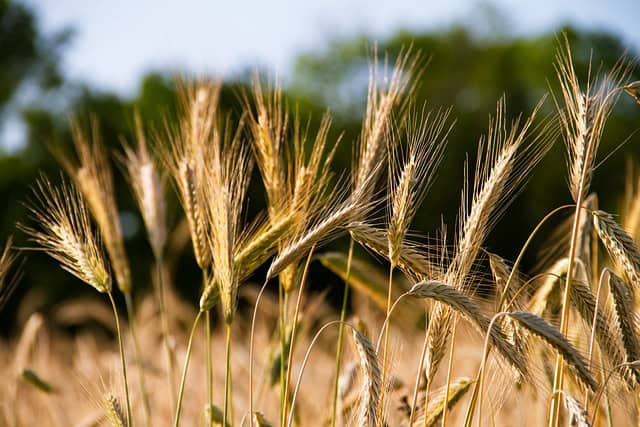
Planting cover crops in October is an excellent way to enrich your soil, prevent erosion, and suppress weeds over the winter months. These crops will not only protect the bare soil but will also add organic matter to your garden once tilled under in the spring.
Ideal Cover Crops for Zone 7
Common cover crops that perform well in Zone 7 include crimson clover, winter rye, and vetch. Crimson clover is particularly beneficial as it enriches the soil with nitrogen while its vibrant blooms attract pollinators in the spring. Winter rye offers excellent erosion control and helps suppress weeds, while vetch is a nitrogen-fixing cover crop that adds fertility to your soil.
Planting Guidelines
Aim to sow cover crops in mid to late October, ensuring that soil temperatures are still conducive to germination. Prepare the soil by tilling or raking to create a good seedbed, and scatter the seeds at the recommended rates, followed by a light raking to cover them. Water periodically to enhance germination and growth.
Maintenance and Benefits
Once established, cover crops require minimal maintenance. If they thrive too much and pose a risk of becoming too tall, mow them down before they flower to prevent unwanted seeds from spreading. In the spring, till the cover crops into the soil several weeks before your main garden planting; this practice enriches the soil with organic matter and nutrients, setting the stage for a successful growing season.
October Chores Zone 7
As October transitions the gardening season in Zone 7, it’s time to focus on essential seasonal chores that will prepare your garden for the colder months and create a thriving environment for next spring. This month is all about tidying up, planting, and planning. In this section, we will delve into several key chores, including soil preparation, plant care, and tool maintenance, to ensure your garden continues to flourish.
1. Soil Preparation and Amendments
Preparing your soil this October is vital to the health of your garden. With temperatures dropping, now is the time to take action on improving soil quality for the next growing season.
Testing Soil pH
Conduct a soil test to determine pH levels and nutrient content. This information can guide the amendments you need, such as lime to raise pH or sulfur to lower it. Many local extension services offer affordable soil testing kits, or you can purchase one online.
Adding Organic Matter
If your soil test indicates the need for amendments, consider adding organic matter, such as well-composted manure or leaf mulch, to enrich the soil. This practice increases nutrient levels and improves soil structure, promoting better drainage and root growth. Spread a 1- to 2-inch layer over your garden beds and till it in.
2. Pruning and Dividing Perennials
October is an excellent time for seasonal pruning and the division of perennials, which can enhance their health and promote vigorous growth in the spring.
Pruning Guidelines
Choose this month to prune back any dead or diseased branches on trees and shrubs. For deciduous shrubs and perennials, cut back their growth to encourage bushier growth next spring. However, be cautious with early bloomers, as they should not be heavily pruned until after flowering.
Dividing Perennials
Perennials such as daylilies, hostas, and peonies can be divided this month to rejuvenate them. Carefully dig up the clumps, ensuring to keep the roots intact, and replant them at the same or a new location. This will not only refresh the perennials but also propagate new plants for your garden layout.
3. Tool Maintenance and Storage
As the gardening season winds down, taking stock of your tools and preparing them for storage is a critical October chore. Proper maintenance extends the life of your tools and ensures they are ready to go when spring returns.
Cleaning Tools
After a heavy season of use, cleaning your gardening tools is essential. Remove any soil, sap, and rust, and disinfect them with a 10% bleach solution or a mixture of water and vinegar. This process helps to prevent the spread of disease in your garden when you’re ready to plant next season.
Sharpening and Oiling
Sharpen blades on pruners, shears, and hoes to ensure clean cuts. Oil wooden handles and metal blades to prevent rusting and splintering. Store them in a dry location to avoid damage from moisture, and consider hanging tools on a pegboard or in a shed for easy access next spring.
4. Preparing for Winter
Finally, preparing your garden for winter is crucial for protecting plants and ensuring a smooth transition into spring. Each plant has specific needs, and some winterizing processes will benefit their health during the colder months.
Covering Tender Plants
For any tender perennials or annuals that may struggle with frost, consider covering them with burlap, straw, or frost blankets. This will provide an extra layer of protection against cold temperatures.
Mulching Garden Beds
Apply a thick layer of mulch (3 to 4 inches) around your perennials. This insulation will help moderate soil temperatures and conserve moisture. Additionally, it will suppress weed growth during the winter months.


